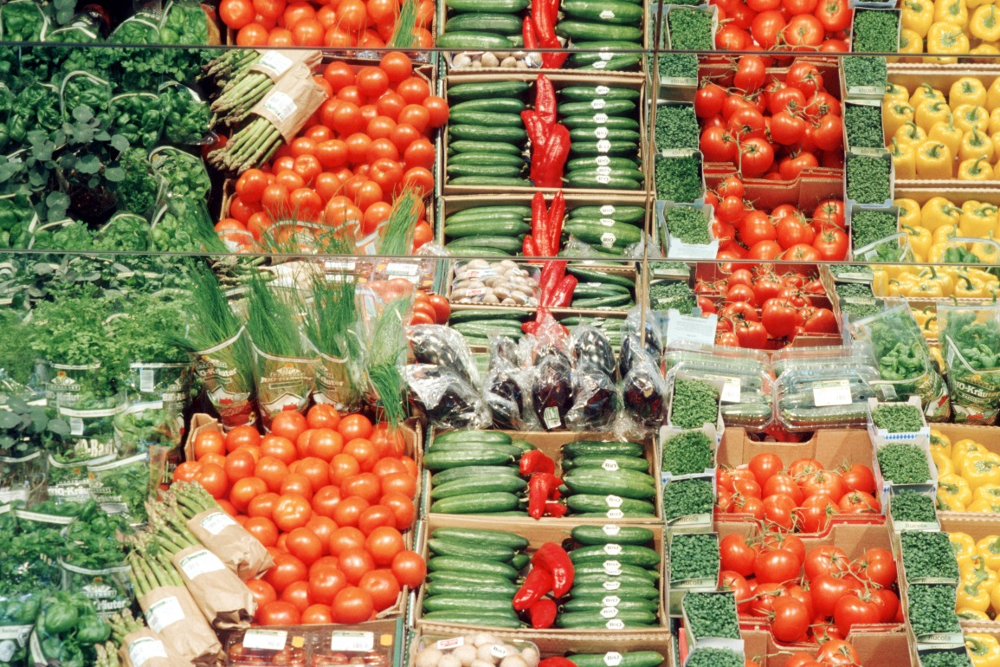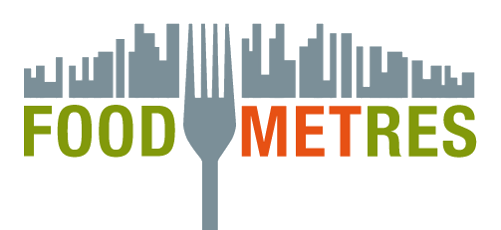Direct Marketing to enterprises and catering
Concept
In this chain type were food distributions pathways summarized where the farmers sale their produce off-farm to commercial enterprises in retail, hospitality industry or collective catering which provide food for the final (private) consumer. The relationship between agricultural producer and consumer is indirect and may comprehend further intermediaries like wholesale or manufacturers.
In retail small quantities of food were sold to the private consumer household. Retail enterprises purchase the produce of different producers or from wholesale in large quantities and present them in their assortment where the consumers select the products to their needs. Retail in many European countries is dominated by large (multinational) enterprises, which source their goods on the world market. Recently large scale retailers started to sale organic and regional food, which has been the classical domain of independent local shops like bakeries, greengrocers, butchers, health food stores so far. Supermarkets create either own brands for this kind of food or offering space for regional (small scale) producers.

Hospitality industry and gastronomy deals with the preparation and provision of food for the individual consumer, who eating out of home. Typical forms are hotels, restaurants, pubs, cafés, snack bars and home delivery. In restaurants there is a growing trend to use local food and offer high quality and seasonal food to the costumer. Restaurants can meet consumers request for fresh and healthy food as well special varieties of products incl. regional specialities. Direct sales from farmers and producers to restaurants need some effort, but there exists good examples of regional networks and initiatives supporting the establishment of regional business relationships (also in connection with tourism) and the development of food delivery schemes (incl. food hubs or producer groups).
Collective catering deals with the service of preparation and delivery of meals at larger scale for collective consumers in the public and private sector. The largest parts in the public sector are health and social care as well as educational institutions, where meals were served in kitchens, cafés and canteens of hospitals, care homes, kindergartens, schools or universities etc. The relationship between the producer and the final consumer is totally indirect. Catering in the private sector encompass e. g. staff and work canteens in enterprises. Public and private catering usually operating not profit-oriented and receive subsidies from the government, municipality, health insurances etc.
Food chains for collective catering can be quite short with supply from one or more regional agricultural producers and/or food manufacturers or long including retail or wholesale. Depending on the number and origin of actors in the food chain the logistic for collective procurement can be very complex. The provision of food to the final costumer can also contain an additional step, if a caterer produce for example pre-cooked food and deliver it to the final point of consumption (e. g. kitchen of a school or hospital), where the food has to be prepared finally (cook and chill or cook and freeze process).
In contrast to private caterers public establishments are usually involved in public procurement processes. Public procurement is governed by different regulations on international and national level, among them the EU directives (Directive 2004/18/EC and 2014/24/EU) which include the principles of non-discrimination, transparency and competition. Therefore in public procurement contracts regional producers, services and goods as well as short transport distance can´t not be favoured. But in terms of green procurement contracting authorities may take into account environmental and social criteria of the production process. Some European countries (in particular Italy, France and UK) interpreted this regulation creatively and specify requirements like fresh, seasonal and organic food, which allows that local producers can be selected.

Contribution to shortening
Retail and eating out (incl. restaurants and collective catering) are relevant distributions channels of the food industry general as well as for regional products. Especially public sector procurement may play an important role in re-localising food chains. For small scale producers direct sale to retail and restaurants is not unproblematic. The integration of (small scale) regional producers into the complex organisation and logistic of large scale retail and catering enterprises is challenging for all actors in the food system and needs creative and innovative solutions. The regional purchase of products might contribute to shortening the transportation distance, support the local economy and achieve a more sustainable food system, finally.

Sources and further readings:
Committee of the Regions 2011: Opinion of the Committee of the Regions on 'Local food systems' (2011/C 104/01). Available from: http://eur-lex.europa.eu/LexUriServ/LexUriServ.do?uri=OJ:C:2011:104:0001:0006:EN:PDF
Directive 2004/18/EC of the European Parliament and of the Council of 31 March 2004 on the coordination of procedures for the award of public works contracts, public supply contracts and public service contracts. Available from: http://eur-lex.europa.eu/legal-content/en/ALL/?uri=CELEX:32004L0018
Directive 2014/24/EU of the European Parliament and of the Council of 26 February 2014 on public procurement and repealing Directive 2004/18/EC. Available from: http://eur-lex.europa.eu/legal-content/EN/TXT/?uri=celex:32014L0024
Ilbery, B and D. Maye 2006: Retailing local food in the Scottish–English borders: A supply chain perspective. In: Geoforum Vol. 37, p. 352–367.
Karner, S. et al. 2010: Local food systems in Europe: Case studies from five countries and what they imply for policy and practice. IFZ Graz. Available from: http://www.faanweb.eu/sites/faanweb.eu/files/FAAN_Booklet_PRINT.pdf
Kneafsey, M. et al. 2013: Short Food Supply Chains and Local Food Systems in the EU: A State of Play of their Socio‐Economic Characteristics. Luxembourg: Publications Office of the European Union. Available from: http://ftp.jrc.es/EURdoc/JRC80420.pdf
Lüth, M. 2004: Köche als Kunden: Direktvermarktung landwirtschaftlicher Spezialitäten an die Gastronomie. Göttingen, Georg-August Universität, Institut für Agrarökonomie. Available from https://www.econbiz.de/Record/k%C3%B6che-als-kunden-direktvermarktung-landwirtschaftlicher-spezialit%C3%A4ten-an-die-gastronomie-l%C3%BCth-maren/10002612031
Morgan, K and A. Morley 2002: Relocalising the food chain: The role of creative public procurement. Available from http://orgprints.org/10852/1/RelocalisingProcurement.pdf
Morgan, K. and R. Sonnino 2007: Empowering consumers: the creative procurement of school meals in Italy and the UK. In: International Journal of Consumer Studies, Vol. 31 (1), p. 19–25.
Peters, R. et al. 2012: Local Food and Short Supply Chains. EU Rural Review No. 12. Available from: http://enrd.ec.europa.eu/enrd-static/fms/pdf/E8F24E08-0A45-F272-33FB-A6309E3AD601.pdf
Rückert-John; J, John, R. and J. Niessen 2010: Verstetigung des Angebots von Öko-Lebensmitteln in der Außer-Haus-Verpflegung: Analyse von Gründen für den Ausstieg und Ableitung präventiver Maßnahmen. Bundesprogramm ökologischer Landbau. Universität Hohenheim. Available from: http://orgprints.org/17824/1/17824-06OE093-uni_hohenheim-kromka-2010-verstetigung_biolebensmittel.pdf
